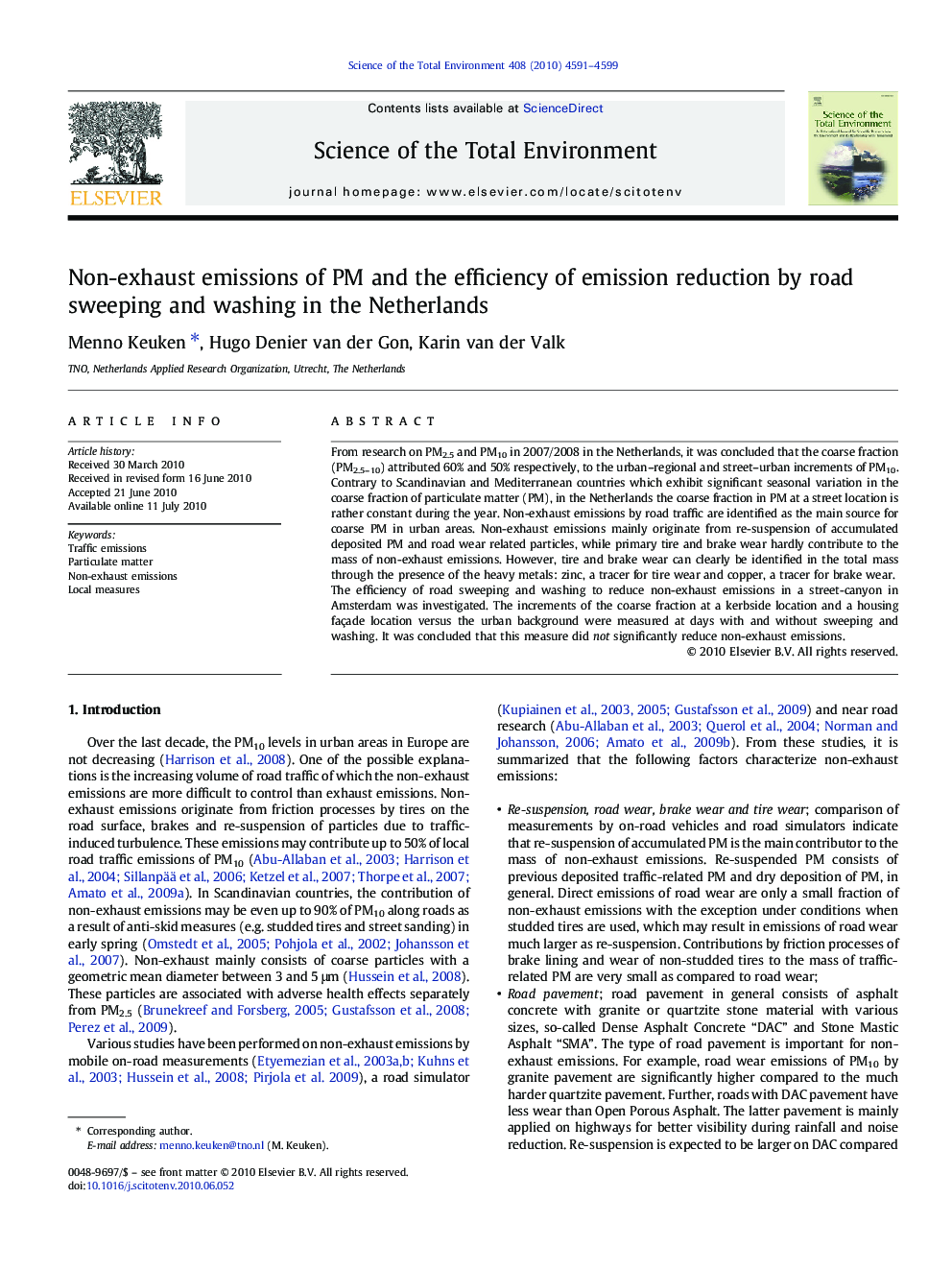| کد مقاله | کد نشریه | سال انتشار | مقاله انگلیسی | نسخه تمام متن |
|---|---|---|---|---|
| 4430915 | 1619866 | 2010 | 9 صفحه PDF | دانلود رایگان |

From research on PM2.5 and PM10 in 2007/2008 in the Netherlands, it was concluded that the coarse fraction (PM2.5–10) attributed 60% and 50% respectively, to the urban–regional and street–urban increments of PM10. Contrary to Scandinavian and Mediterranean countries which exhibit significant seasonal variation in the coarse fraction of particulate matter (PM), in the Netherlands the coarse fraction in PM at a street location is rather constant during the year. Non-exhaust emissions by road traffic are identified as the main source for coarse PM in urban areas. Non-exhaust emissions mainly originate from re-suspension of accumulated deposited PM and road wear related particles, while primary tire and brake wear hardly contribute to the mass of non-exhaust emissions. However, tire and brake wear can clearly be identified in the total mass through the presence of the heavy metals: zinc, a tracer for tire wear and copper, a tracer for brake wear.The efficiency of road sweeping and washing to reduce non-exhaust emissions in a street-canyon in Amsterdam was investigated. The increments of the coarse fraction at a kerbside location and a housing façade location versus the urban background were measured at days with and without sweeping and washing. It was concluded that this measure did not significantly reduce non-exhaust emissions.
Journal: Science of The Total Environment - Volume 408, Issue 20, 15 September 2010, Pages 4591–4599